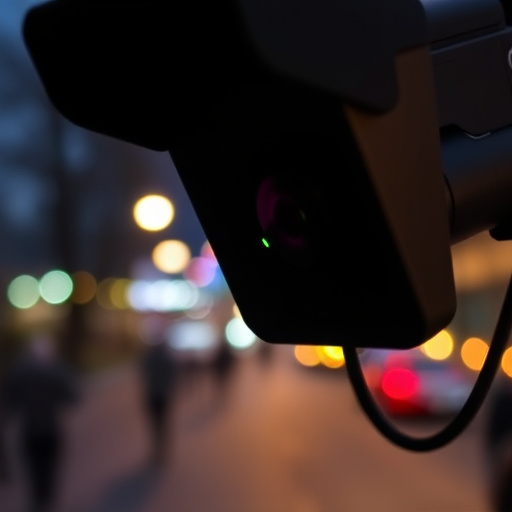Wireless spy cameras disguised as everyday items have become a growing concern for privacy and security. The science behind light reflection detection analyzes subtle changes in light patterns, allowing specialized technology to identify unusual reflections indicative of hidden cameras. Cloud storage acts as a centralized platform for real-time data analysis, processing information and enabling swift identification. Implementing this method requires specific tools like high-quality digital cameras and cloud services, enhancing image capture in low light and organizing visual evidence securely. With growing demand for home and business security, cloud storage offers an ideal solution for remote access, encryption, and management of footage from detected wireless spy cameras.
Uncover the insidious world of wireless spy cameras with our in-depth exploration. These hidden devices pose a significant threat, but don’t panic – we’ve got you covered. We demystify their operation and delve into a powerful detection method centered around light reflection. Learn how this technique reveals covert surveillance, ensuring your privacy. From identifying suspicious signals to utilizing cloud storage for evidence, this guide equips you with the knowledge to fortify against these modern-day snoops.
- Understanding Wireless Spy Cameras and Their Prevalence
- The Science Behind Light Reflection Detection
- Implementing the Technique: Tools and Equipment Required
- Enhancing Security: Cloud Storage as a Solution for Detected Spy Cameras
Understanding Wireless Spy Cameras and Their Prevalence
Wireless spy cameras, also known as hidden cameras, have become increasingly prevalent in today’s digital age. These devices are designed to capture images and videos surreptitiously, often disguised as everyday objects like smoke detectors, light bulbs, or even clothing. One of their key features is the ability to transmit footage wirelessly, eliminating the need for physical connections. This technology enables easy access and remote viewing via mobile apps or cloud storage, making it a favorite among those seeking to monitor activities without detection.
The widespread use of wireless spy cameras has raised concerns about privacy and security. Since these devices can operate discreetly, they pose a significant threat to personal spaces. Additionally, the ability to store footage in cloud storage further complicates matters, as unauthorized access to such accounts could compromise sensitive information. Therefore, being vigilant and utilizing detection techniques like light reflection analysis is crucial to counter this growing trend of hidden surveillance.
The Science Behind Light Reflection Detection
The science behind light reflection detection involves analyzing subtle changes in light patterns and their behavior upon encountering surfaces. When a wireless spy camera is present, it emits light, which then bounces off various objects in its surroundings. These reflected lights return to the detector with distinct characteristics, including intensity and timing. By studying these reflections, specialized technology can identify unusual patterns indicative of hidden cameras.
Cloud storage plays a crucial role in this process by providing a centralized platform for real-time data analysis. When light reflections are detected, the information is swiftly uploaded to the cloud, where advanced algorithms process the data to locate and identify potential spy cameras. This immediate transfer ensures that any suspicious activity can be promptly addressed, making it an effective countermeasure against covert surveillance using wireless spy cameras.
Implementing the Technique: Tools and Equipment Required
Implementing the Technique: Tools and Equipment Required
To employ the light reflection method for detecting wireless spy cameras, a few specialized tools are essential. Firstly, high-quality digital cameras with adjustable settings are crucial. These cameras should be able to capture detailed images in low-light conditions, ensuring any reflected light from hidden camera lenses is visible. Additionally, an array of lenses and filters can enhance the process, allowing for different angles and the ability to zoom in on potential camera locations.
Cloud storage services play a vital role in this technique. Captured images need to be stored securely and easily accessible. Cloud platforms provide a reliable means of saving and organizing visual evidence, enabling quick reviews and comparisons. With these tools at hand, individuals can effectively navigate the task of identifying wireless spy cameras, ensuring privacy and security in various settings.
Enhancing Security: Cloud Storage as a Solution for Detected Spy Cameras
The detection of wireless spy cameras has become a critical aspect of enhancing home and business security in today’s digital era. While advanced techniques like light reflection analysis can help uncover hidden cameras, the next step is ensuring the secure management of this information. Cloud storage emerges as a robust solution, offering a centralized and accessible way to store data from detected spy cameras.
By leveraging cloud storage, users can remotely access footage and alerts, eliminating the need for local storage devices that might be compromised or lost. This not only streamlines the monitoring process but also enhances security further by providing a secure, encrypted platform where sensitive information is stored and backed up.
Wireless spy cameras pose a significant threat to privacy, but by employing light reflection detection techniques and leveraging cloud storage for secure data sharing, individuals can significantly enhance their security measures. Understanding these advanced methods allows us to stay ahead of malicious actors. Adopting such proactive strategies not only safeguards personal spaces but also contributes to creating a safer digital environment. By combining technological awareness with practical solutions like cloud storage, we can protect our privacy in an increasingly connected world.
